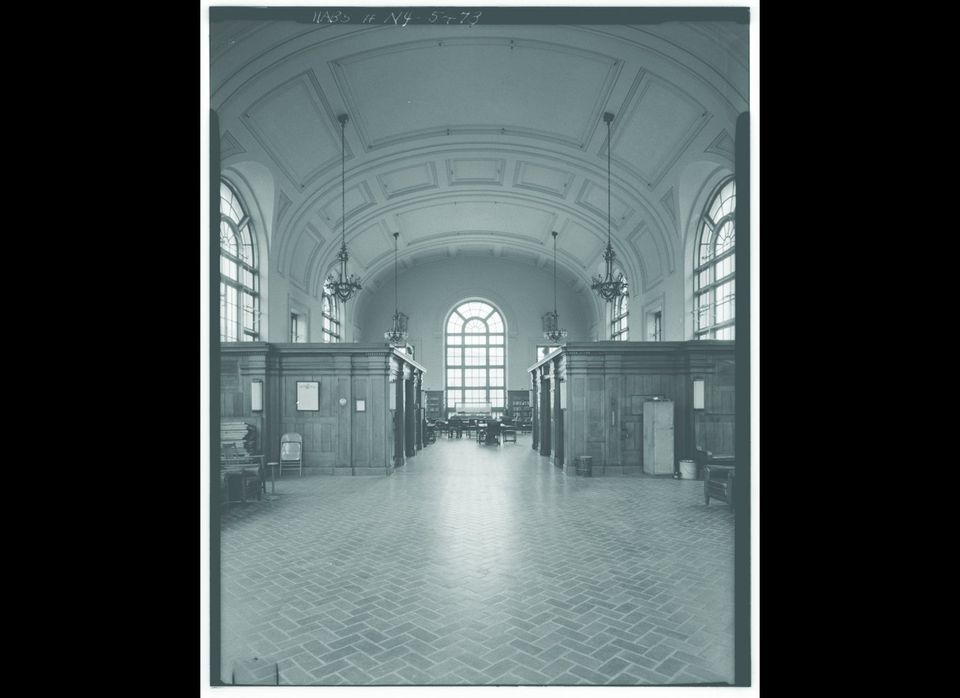Many of us don't think much about preserving history until 'progress' reduces our fond memories to rubble. Yet historic preservation is important not just to our societal memory -- it is proven to have economic and environmental benefits to communities as well.
Preservation has the ability to inspire people, to preserve community identity, and to celebrate our country's rich and varied traditions. Preservation saves the places that matter to people and acts as a linchpin in neighborhood development and as a key to expanding economic vitality and growth.
Yet each year historic properties are being lost or substantially altered with increasing frequency, according to the National Park Service, which conducts the National Historic Landmarks program.
Historic buildings in older neighborhoods attract people to urban living and are integral to defining the personality of cities, lending vibrancy to communities and drawing both residents and entrepreneurs. Preservation creates thousands of high-paying, high-skilled jobs every year. Many of the materials and labor are sourced locally, injecting capital and employment opportunities into communities. According to Rutgers University's Center for Urban Policy Research, in 2009 and 2010 historic rehabilitation created more than 145,000 new jobs.
In its 32-year history, the federal rehabilitation historic tax credit (HTC) has helped create 2.2 million jobs, saved 38,000 vacant or underutilized buildings and attracted almost $100 billion in private investment in urban and rural communities.
By adapting warehouses, schools, churches and other historic resources to meet modern needs for housing, arts space, offices and community centers, the HTC has revitalized communities and fueled local economies. For every $1 in historic tax credits, $5 in private investment is leveraged.
Often this investment is made in low income neighborhoods. According to the National Park Service, since 2002, about two-thirds of all historic tax credit projects have been in low-income neighborhoods.
This new investment often sparks an economic revitalization. Residents, businesses and tourists are drawn to communities that retain their distinctive character and heritage. Restaurants, shops and services follow preservation. The cumulative 32-year, $17.5 billion cost of the program is more than offset by the $22.3 billion in federal taxes these projects have generated.
Preservation is also good for the environment. Rehabilitation of existing structures reduces waste and saves energy. Reusing a 5,000 square foot building saves a level of carbon equal to the amount consumed by 85 homes in one year, the Athena Institute has found.
A National Trust for Historic Preservation report concluded when comparing buildings of equivalent size and function, building reuse almost always offers environmental savings over demolition and new construction.
According to National Trust research, 65 million Americans say they support historic preservation and 15 million are active in preservation efforts, making it one of the most active causes. Yet, since preservation is often undertaken at the grassroots level, it falls under the radar for media attention.
That may be changing along with the face of preservationists. The study found these 'local preservationists' tend to be younger, more diverse, somewhat less affluent but more likely to volunteer and be actively involved in online activities around historic sites.
To capitalize on this trend and help engage the broader community in supporting local historic treasures, Partners in Preservation, an effort by American Express Foundation and the National Trust for Historic Preservation, has awarded $6.5 million since 2006 to nearly 100 preservation projects in San Francisco, Chicago, New Orleans, Boston, Seattle and Saint Paul/Minneapolis through an online public vote campaign.
In Boston, for example, the program helped preserve the Paragon Carousel, resulting in increased ridership, attracting volunteers, and creating partnerships with local restaurants and attractions to increase traffic for all. The effort also yielded ongoing programming and an increase in visitors to the carousel. In addition, as a result of the program, a group of historic sites across Greater Boston formed a collaborative that seeks to capitalize on the enthusiasm and momentum spurred by the Partners in Preservation competition and work collaboratively to leverage their individual assets.
This spring the program comes to New York City to highlight the Big Apple's historic gems and encourage the public's participation in deciding which of 40 historic sites -- ranging from the well-known to the obscure -- should get the largest of $3 million in grants. The program calls on the public to vote online from April 26, when the sites will be announced, through May 21 for the preservation projects most important to them. Anyone 13 years of age and older, anywhere in the world can vote online, as often as once a day, by visiting www.PartnersinPreservation.com or our Facebook.
All 40 sites will have free open houses to encourage visitors with special programing on Saturday, May 5 and Sunday, May 6.
Preservation of our historic places helps strengthen communities, generate jobs and build sustainable cities and towns. Through public involvement the program hopes to foster a deeper interest in protecting New York's important historic and cultural sites for many decades to come. By spreading the message of preservation in New York and across the country, the program aims to inspire long-term support from local citizens for the historic places at the heart of their communities. The spirit and direction of the nation are reflected in our historic heritage, and saving these treasures will enrich us and future generations.
Stephanie Meeks is president of the National Trust for Historic Preservation.
Timothy J. McClimon is president of the American Express Foundation.
